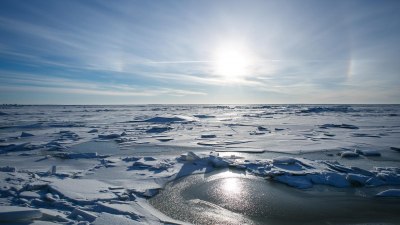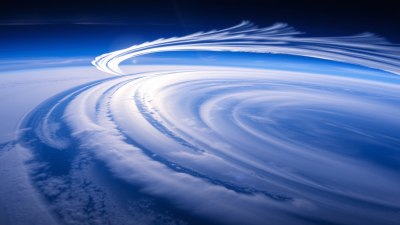What Causes Dramatic Temperature Swings
Explore the factors and phenomena leading to dramatic temperature shifts in our climate.

This image was created with the assistance of Freepik
Temperature swings, which can be both dramatic and sudden, are phenomena that capture the attention of scientists, meteorologists, and the general public alike. Understanding the causes of these fluctuations is crucial not only for predicting weather patterns but also for grasping the complex interplay of natural systems that regulate our planet's climate. In this article, we will delve into the various factors that contribute to these temperature changes, exploring everything from geographical influences to the impacts of climate change.
Understanding Temperature Swings
Temperature swings refer to substantial changes in temperature over a specific period. These changes can happen over days, weeks, or even hours, and their intensity and frequency can vary greatly depending on a range of environmental factors. Understanding these swings is essential because they can influence agriculture, energy consumption, and overall climate patterns. Typically, temperature swings are measured in degrees Celsius or Fahrenheit and can range from mild variations to extreme shifts resulting in heatwaves or frosts.
Geographical Influences
The Earth's geography plays a significant role in temperature fluctuations. For example, regions with coastal proximity can experience milder temperatures compared to inland areas due to the moderating effects of ocean currents and wind patterns. This phenomenon is evident in places like San Francisco, where cool ocean breezes create a unique microclimate. In contrast, areas located further inland, such as deserts, may encounter more extreme temperature variations, with scorching days and frigid nights.
Seasonal Changes
Seasonal transitions are another natural cause of temperature swings. As the Earth orbits the sun, different regions receive varying amounts of sunlight, leading to seasonal weather patterns. Spring and fall often showcase more abrupt temperature changes as warm and cool air masses clash, resulting in fluctuating temperatures that can manifest as unseasonably warm or cold spells. For instance, a sudden warm front may elevate temperatures rapidly, while a cold front can result in a sharp drop, contributing to significant temperature swings.
Weather Fronts
Weather fronts are boundaries between two different air masses and are among the leading causes of temperature swings. When a warm air mass moves into a region previously dominated by cool air, it can create dramatic shifts in temperature. For instance, the arrival of a warm front can push temperatures up significantly, followed closely by a cold front that brings a sudden drop. The dynamic interaction between these air masses often leads to unpredictable weather patterns, including storms, precipitation, and rapid temperature changes.
El Niño and La Niña Phenomena
El Niño and La Niña events are significant climatic phenomena that occur in the Pacific Ocean and have widespread implications for global weather. During an El Niño event, warmer ocean waters influence atmospheric patterns and can lead to higher temperatures in various regions, contributing to heatwaves and altered precipitation patterns. Conversely, La Niña events typically bring cooler ocean temperatures, leading to different weather outcomes, including colder winters in certain areas and associated temperature swings. These phenomena can significantly affect agricultural practices, water supply, and energy usage.
The Urban Heat Island Effect
The urban heat island (UHI) effect occurs in metropolitan areas where concrete and asphalt absorb and retain heat more than natural land cover. This effect leads to higher temperatures in cities compared to their rural surroundings, resulting in more pronounced temperature swings. During the day, urban areas can be significantly warmer, while at night, they may not cool down as rapidly as rural areas due to retained heat. This unique thermal dynamic can affect local weather patterns and lead to increased energy consumption for cooling, as well as health risks associated with extreme heat.
Climate Change and Temperature Extremes
Climate change is profoundly impacting the frequency and intensity of temperature swings across the globe. Human-induced greenhouse gas emissions are leading to a warming planet, which alters traditional weather patterns. As average temperatures rise, we are likely to see an increase in the frequency of extreme weather events, including heatwaves, cold snaps, and unpredictable weather conditions that contribute to dramatic temperature changes. The alterations in climate patterns affect not only the overall environment but also human activities such as agriculture, water supply, and public health.
Natural Climate Variability
Besides anthropogenic effects, natural climate variability also contributes to temperature swings. These variations may stem from internal climate dynamics, such as changes in ocean circulation patterns or variations in solar radiation. The interannual variability of climate systems fosters an ever-changing climate landscape, characterized by variations in temperature. This natural variability can lead to unexpected cold snaps or heatwaves, affecting seasonal predictions and ecological systems.
Human Activity and Land Use Changes
Human activities are integral to the context of temperature fluctuations, particularly through land use changes. Deforestation, urbanization, and alteration of landscapes can disrupt local climate systems and contribute to temperature increases. For example, replacing forests with agricultural land eliminates the cooling effect provided by vegetation, leading to higher temperatures in these areas. Similarly, changes in land use can modify local airflow patterns and precipitation distribution, resulting in altered thermal dynamics and temperature swings.
Understanding the causes of dramatic temperature swings is critical for preparing for climate impacts and devising strategies to mitigate adverse effects. These fluctuations are influenced by various factors ranging from geographical location and seasonal changes to weather front activities and climate change. By studying these elements, we can better anticipate and adapt to the challenges posed by ever-evolving climate conditions, ensuring a more resilient future for both natural ecosystems and human societies.











